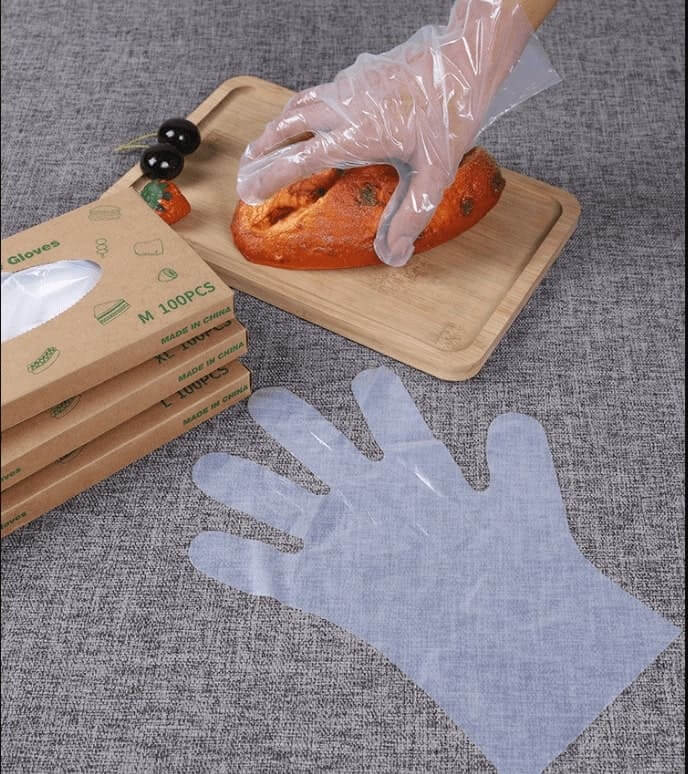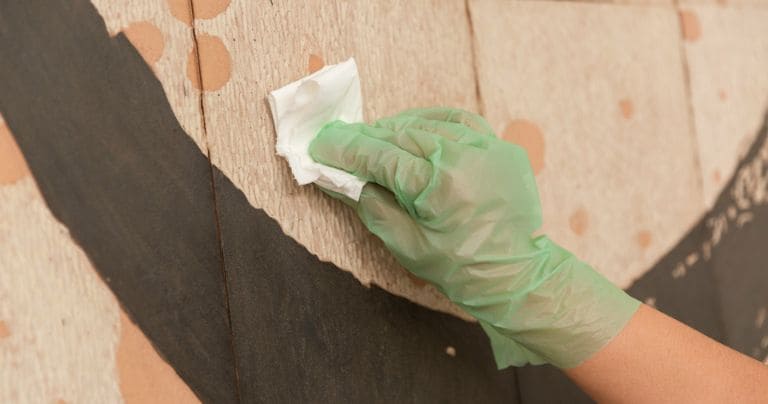Table of Contents
If you are a food service worker, then you know that it is important to use the right gloves when serving food. There are many different types in available, and it can be difficult to decide which ones to use. In this post, we will discuss which ones should be used for specific tasks.
There are a few different types of gloves that you can choose from, and each one has its benefits and drawbacks. Compostable food service gloves are best suited for composting compared to other materials because they are 100% Eco-friendly, durable, and non-irritating.

What are the different types of gloves that can be used to serve food?
When it comes to food service, there are a lot of health and safety concerns that need to be taken into account. One of the most important things to consider is what type of product you will use when handling food. The most popular product for food service: are compostable gloves, plastic, latex and nitrile gloves.
Biodegradable Compostable Gloves
These biodegradable compostable gloves are made from plant-based materials that can safely be broken down by microorganisms in a compostable environment. They are a great option for food service because they reduce the amount of waste that goes to landfills. However, compostable gloves can be more expensive than other product.

Plastic Gloves
Plastic disposable gloves are a popular choice for food service because they are cheap and disposable. However, they are not very eco-friendly since they cannot be recycled or composted.They’re also tend to rip easily, which can leave food exposed to contaminants.
Latex Gloves
The products are made from natural rubber latex and offer good resistance to tearing. They are also typically cheaper than nitrile or vinyl gloves. However, some people have latex allergies, which means that product cannot be used by everyone in a food service setting. In addition, they’re can deteriorate after extended use and may need to be replaced more frequently than other types of products.
Nitrile Gloves
The powder free nitrile gloves are made from synthetic rubber and offer good resistance to chemicals and tearing. They are also hypoallergenic, which makes them a good choice for people who have latex allergies. Nitrile products can be more expensive than latex or vinyl materials, but they last longer and provide better protection against contaminants.
Conclusion
There are a few different factors to consider when choosing the right type of glove for your food service business. Cost, durability, eco-friendliness, and allergies are all important things to take into account.
Compostable biodegradable gloves area great eco-friendly option, but they may not be as durable as other types of disposable ones. Plastic products are very cheap but not very eco-friendly or durable. Latex products offer good resistance to tearing but may not be suitable for people with allergies. Nitrile products provide good resistance to chemicals and tearing and are hypoallergenic, but they can be more expensive than other types of products.

Which gloves should be used for which type of food service, and why is this important?
When you’re working in the food service industry, it’s important to use the right type of glove for the job. The wrong type of glove can lead to cross-contamination, which can make people sick.
Compostable Biodegradable Gloves
These eco-friendly compostable biodegradable gloves are made from plant based or other biodegradable materials. They’re meant to be used once and then disposed of. They’re a good choice for handling raw meat or seafood.

Plastic Disposable Gloves
These disposable products are made from polyethylene, which is a type of plastic. They’re less expensive than other types, and they’re reusable. They’re a good choice for handling dry food like bread or vegetables.
Latex Disposable Gloves
These disposable products are made from natural rubber latex. They’re a good choice for tasks that require a snug fit, like washing dishes. Some people are allergic to latex, so it’s important to test them before using them.
Nitrile Disposable Gloves
These products are made from synthetic rubber, so they’re a good choice for people with latex allergies. They’re also chemical-resistant, so they’re a good choice for tasks that involve cleaning chemicals.
Conclusion
Knowing which glove to use for which task is important for food safety. Contamination can occur when the wrong type of glove is used, so it’s best to err on the side of caution and use the appropriate type of glove for each task.

Keeping Your Gloves Clean in the Food Service Industry
If you work in the food service industry, it’s important to make sure that your gloves are always clean and sanitary. After all, you’re handling other people’s food, and nobody wants to eat food that’s been contaminated. There are a few simple steps you can take to make sure that your gloves are always clean.
Wash your hands thoroughly before putting on gloves
It’s important to start with clean hands so that you don’t end up contaminating your gloves. Be sure to wash for at least 20 seconds, using soap and water.
Put on a new pair of gloves for each task
You should be changing your gloves regularly, especially if you’re handling different types of food. For example, if you’re handling raw meat and then need to grab some vegetables, be sure to put on a new pair of gloves in between tasks.

Don’t wear gloves that are too big or too small
If your gloves are too big, they can easily fall off and leave your hands exposed to contaminants. If they’re too small, they can tear easily and also leave your hands exposed. Either way, it’s not good! Be sure to find a pair of gloves that fit well so that you can avoid any potential accidents.
Don’t use gloves that have holes in them
This one should be pretty self-explanatory—if there are holes in your gloves, contaminants can easily get through and come into contact with your skin. If you notice any holes in your gloves, throw them away immediately and put on a new pair.
Store your gloves properly when you’re not using them.
When you’re not wearing them, be sure to store your gloves in a safe place where they won’t become contaminated. A good option is to store them in a resealable plastic baggie until you’re ready to use them again.






